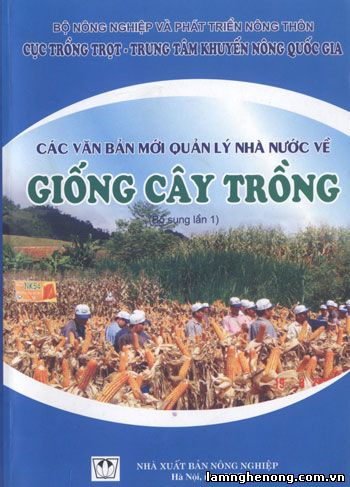9:42 PM , 19
 »
Khoa Học Chuyên Ngành
»
2013 » Tháng một » 28
»
Khoa Học Chuyên Ngành
»
2013 » Tháng một » 28
Light affects plant growth
6:16 AM, 2013-01-28
Light has three principal characteristics that affect plant growth: quantity, quality, and duration.
Light quantity refers to the intensity or concentration of sunlight and varies with the season of the year. The maximum is present in the summer and the minimum in winter. The more sunlight a plant receives (up to a point), the better capacity it has to produce plant food through photosynthesis. As the sunlight quantity decreases the photosynthetic process decreases. Light quantity can be decreased in a garden or greenhouse by using shade-cloth or shading paint above the plants. It can be increased by surrounding plants with white or reflective material or supplemental lights.
Light quality refers to the color or wavelength reaching the plant surface. Sunlight can be broken up by a prism into respective colors of red, orange, yellow, green, blue, indigo, and violet. On a rainy day, raindrops act as tiny prisms and break the sunlight into these colors producing a rainbow. Red and blue light have the greatest effect on plant growth. Green light is least effective to plants as most plants reflect green light and absorb very little. It is this reflected light that makes them appear green. Blue light is primarily responsible for vegetative growth or leaf growth. Red light when combined with blue light, encourages flowering in plants. Fluorescent or cool-white light is high in the blue range of light quality and is used to encourage leafy growth. These lights are excellent for starting seedlings. Incandescent light is high in the red or orange range but generally produces too much heat to be a valuable light source. Fluorescent "grow" lights have a mixture of red and blue colors that attempts to imitate sunlight as closely as possible. They are costly and generally not of any greater value than regular fluorescent lights.
Light duration or photoperiod refers to the amount of time that a plant is exposed to sunlight. When the concept of photoperiod was first recognized it was thought that the length of periods of light triggered flowering. The various categories of response were named according to the light length (i.e., short-day and long-day). It was then discovered that it is not the length of the light period but the length of uninterrupted dark periods that is critical to floral development. The ability of many plants to flower is controlled by photoperiod.
Plants can be classified into three categories, depending upon their flowering response to the duration of darkness. These are short-day, long-day, or day-neutral plants. Short-day, (long nights) plants form their flowers only when the day length is less than about 12 hours in duration. Short-day plants include many spring and fall flowering plants such as chrysanthemum and poinsettia. Long-day, (short nights) plants form flowers only when day lengths exceed 12 hours. They include almost all of the summer-flowering plants, as well as many vegetables including beet, radish, lettuce, spinach, and potato. Day-neutral plants form flowers regardless of day length. Some plants do not really fit into any category but may be responsive to combinations of day lengths. The petunia will flower regardless of day length, but flowers earlier and more profusely under long daylight. Since chrysanthemums flower under the short-day conditions of spring or fall the method for manipulating the plant into experiencing short days is very simple. If long days are predominant, a black plastic sheet is drawn over the chrysanthemum for 12 hours daily to block out light until flower buds are initiated. To bring a long-day plant into flower when sunlight is not present longer than 12 hours artificial light is added until flower buds are initiated.
Bài cũ hơn


 0 phản hồi
0 phản hồi Gửi phản hồi
Gửi phản hồi


